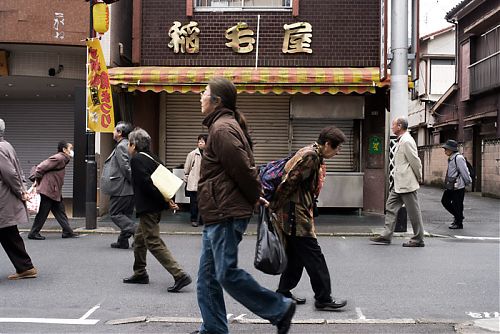This series has great potential. It’s a compelling idea to capture images in which everyone is doing the same thing, and the execution is beyond reproach. But the result, for me, turns photography into hoop-jumping: “did you see how many fools I snapped doing this?”

The accompanying artist statement is also problematic, as these things tend to be:
These images present a parallel view of public space. Revealing behaviours and modes of existence that characterize the notion of public, but are no longer visible or registered due to their ubiquity.
This statement actually runs counter to the work that went into the images: the photographer had to hunt them down and force them into existence. Rather than showing that these behaviors “are no longer visible,” I am assaulted by their visibility. Aren’t you too? Confusing.
I want the photographer to jump through one more hoop, and a much bigger one at that: once you’ve got all your ducks in a row, play them off of their setting, too!
Similar to these…Well, the first half or so, and some of them are stronger than others.
http://www.v1gallery.com/artist/show/3